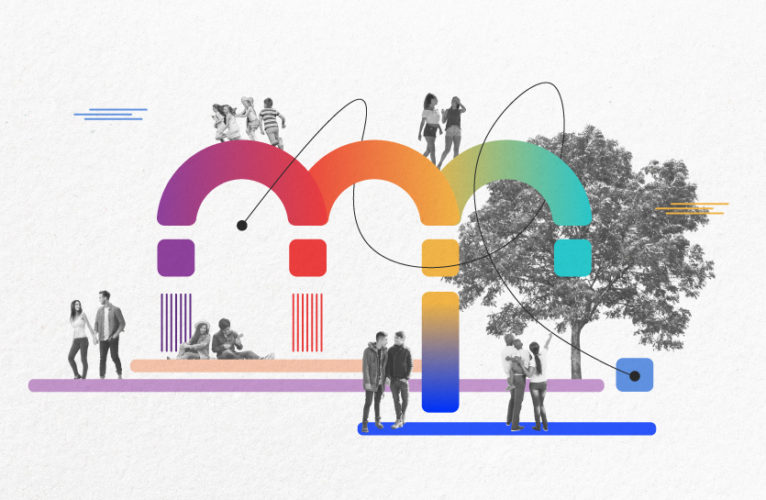Expert Tips on How to Build a More Inclusive Future
June 27, 2022
5 min read
At the core of allyship is education and advocacy for all communities.
We connected with Ashley Moore, Ph.D., to share his knowledge on inclusive spaces and how to be a better ally.
Moore has focused his research and practices on inclusive language education. He’s written about and consulted on diversity, equity, and inclusion for a number of organizations, including Charitable Impact. We are so grateful that he was able to share his insights with us.
What is the practice of inclusivity in workplaces, educational institutions, organizations, and even at home? How can we educate ourselves to create a diverse and inclusive space? It may start with understanding the contrast between the distinct concepts of diversity and inclusion.
“Diversity is a property or characteristic of a group of people with different identities. In short, you can have a diverse organization and community in which various people are still excluded through gender, identity, ableism, etc.,” said Moore in an online interview with Charitable Impact.
“You can have a diverse organization and community in which various people are still excluded.”
“Inclusive is a commitment to ensure that all levels of a system—whether it be a community, a group, or an organization—are set up in ways that ensure that everyone has a seat at the table, is able to contribute, and that contribution is valued. The system and the culture, as well as the activities that occur within, are designed and carried through so everyone can participate and their wellbeing is ensured,” he added.
Steps you can take to support inclusion
As soon as you become aware of the differences in people’s needs to participate in conversations or activities, you can start to look at ways to create a more inclusive environment. You can take actionable steps to increase your knowledge, then make a conscious effort to ensure everyone feels their needs are met, Moore said.
“In everyday allyship, you have to look at who can or cannot participate in activities and review who is represented in the language being used,” he added.
First, commit to learning and growing
Defining inclusivity as a part of your values is a way to help guide your actions toward a more inclusive future. Make your commitment to inclusion explicit from the beginning and create a mission statement around this practice.
But this is just the first step. Recognize that when requests are made for inclusivity, it’s always absolutely reasonable,” Moore stated. “It’s usually a small thing you can do to make everyone feel comfortable.”
Ensure inclusion requests are met for everyone
Then, take actions that support your mission towards working on inclusive spaces. “Even the smallest act or change in verbal or body language can sometimes make individuals feel like their requests are being heard and respected,” said Moore.
Even the smallest act or change in body language can make individuals feel heard.
If you’re in a position where your actions dictate inclusive and exclusive spaces, building trust comes from how you react to those requests. Creating a space for others to feel safe and welcomed is key.
Be curious, learn, and ask questions of yourself
Taking the time to do your own research online by learning from trusted experts, organizations, activists, or even talking to others about your mission is a great first step in educating yourself. Keep in mind that no one owes you their insights or expertise.
Listen carefully and trust what others share with you
Listen to what others say about their own experiences regarding their individuality and offer a listening ear. Practice active listening by providing space for others to speak without overtaking the narrative.
“Understand that inclusion is a complex, ongoing process and that you’ll need to create confidential pathways for those in this group to share their inclusion needs,” Moore explained.
“Understand that inclusion is a complex, ongoing process.”
Getting buy-in from those involved and learning what works best for their own needs is important, Moore explained. Let individuals define what they find discriminatory so that an open conversation can take place.
Be self-reflective, be accountable, and speak up
Remember, even when your intentions are good, there may be hurtful outcomes for others. Take time to reflect on your actions. Then take steps to acknowledge, recognize, and thoughtfully correct your mistakes. Speak up for others if you see or hear someone saying something discriminatory or hurtful.
It’s a process. Moore suggests eliciting feedback and being critically self-reflective as the learning unfolds.
“Calling in” is a specific practice that Moore speaks to in his work. If you’re in a public setting, pulling someone aside, explaining how their words were hurtful, and even politely offering resources to help their understanding can bring others to join in towards building a more inclusive future.
If you’re looking to further your contribution in this area, you can search for charitable organizations that are addressing issues related to diversity, equity & inclusion. Whether you wish to give your time, talent, or support to an organization, you can strengthen a commitment to increasing inclusivity for all.

